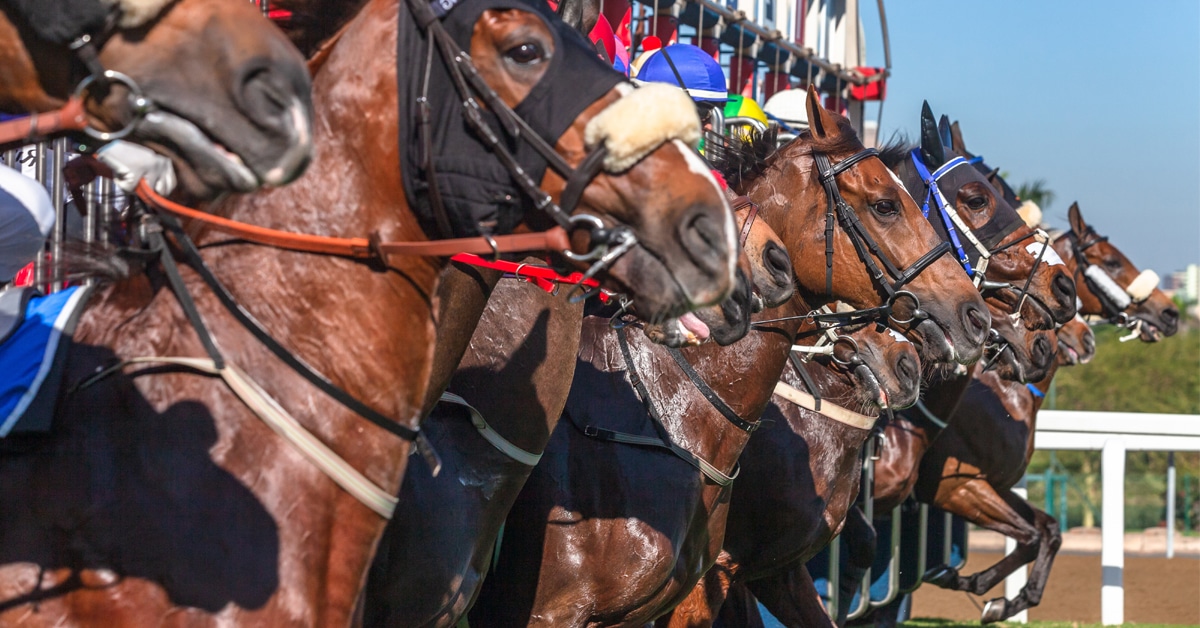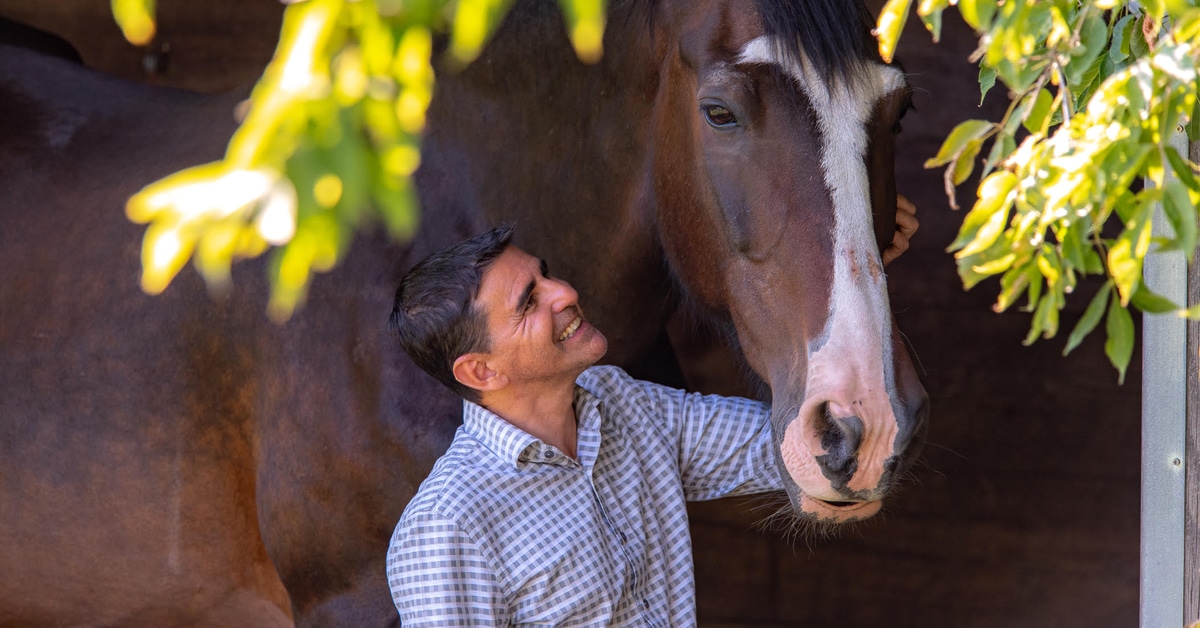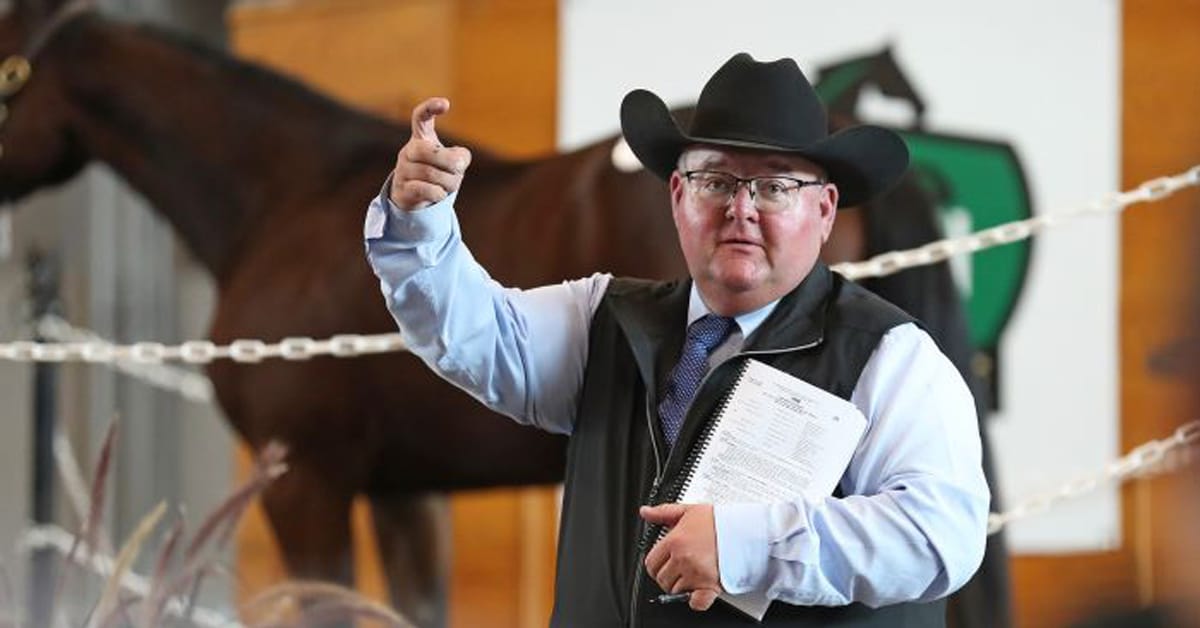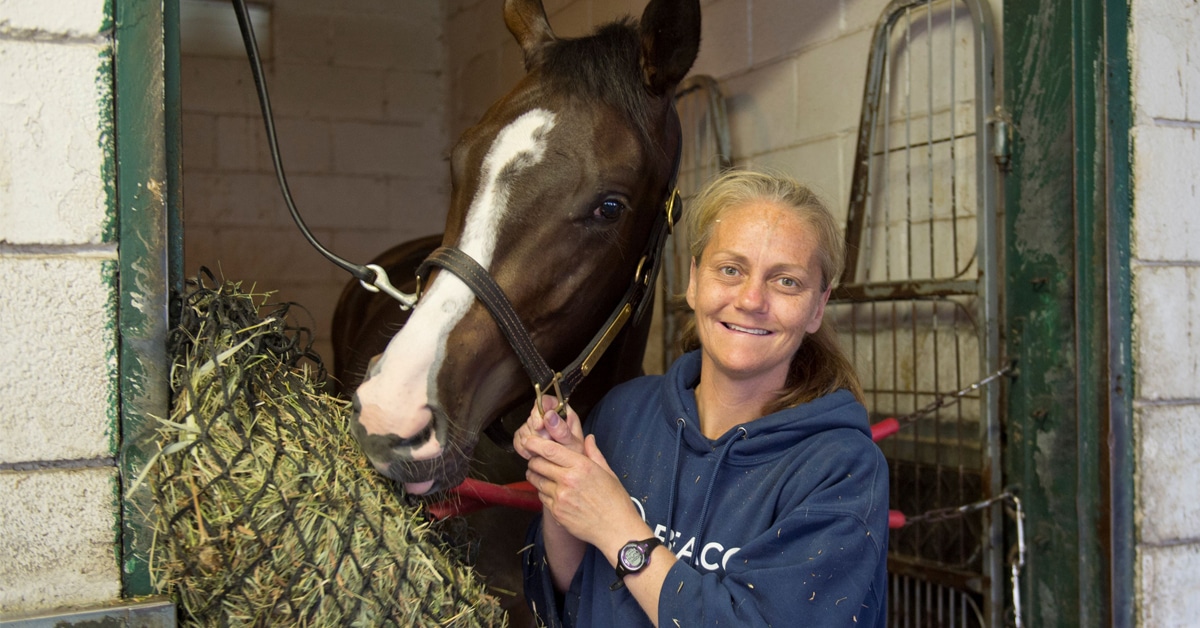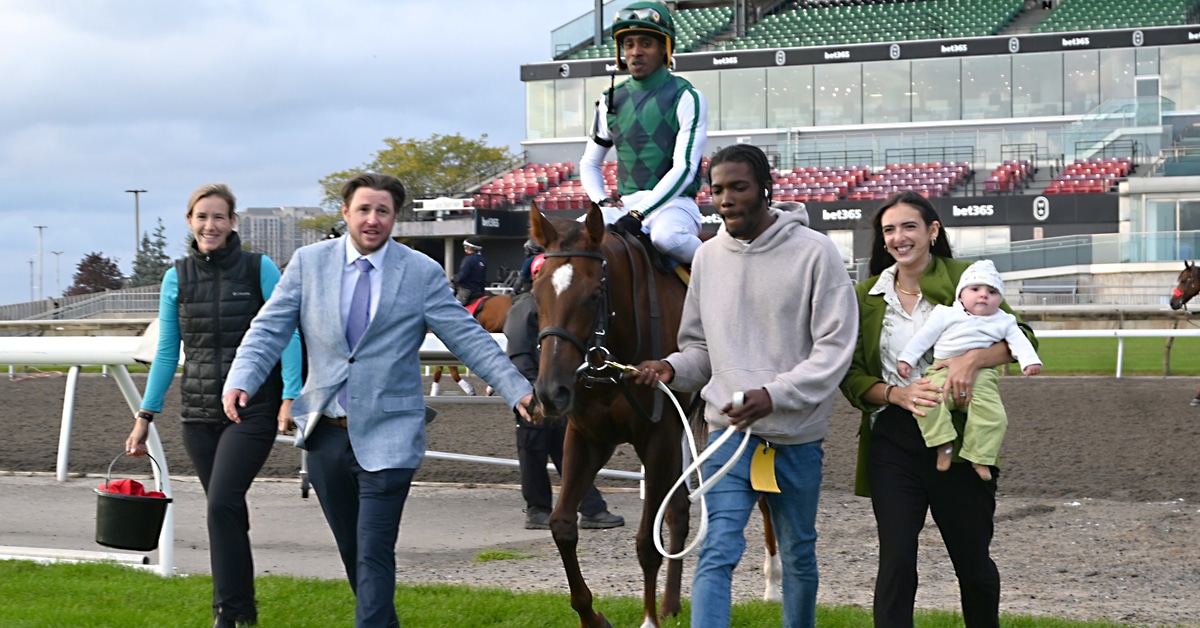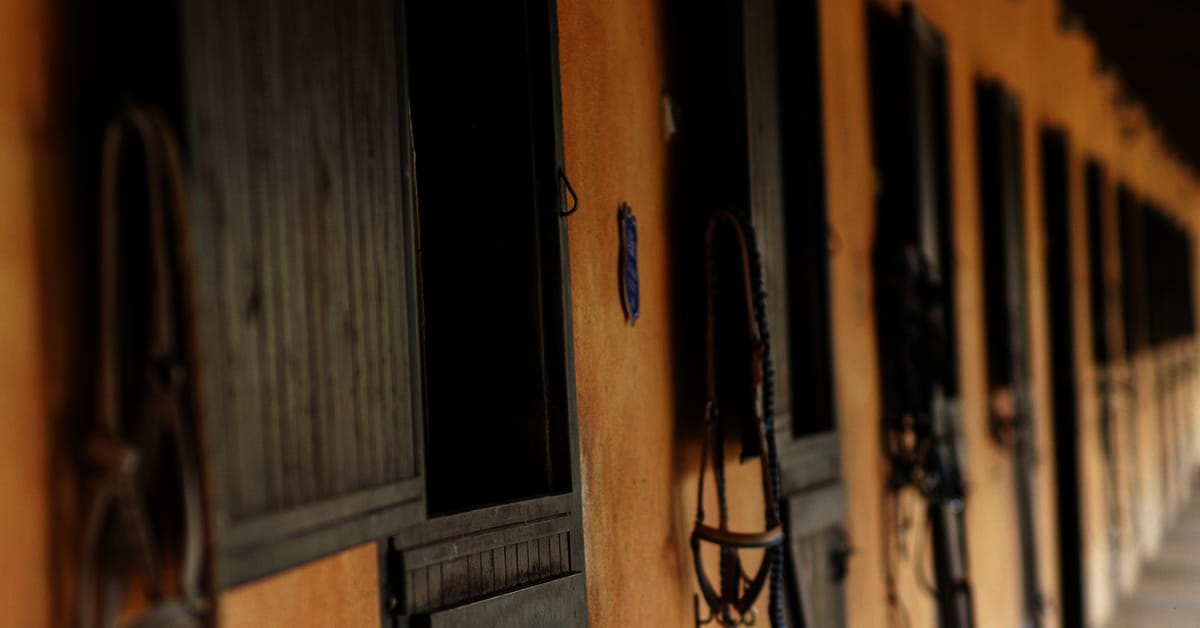Thoroughbred breeding involves producing winning racehorses and, often more importantly, producing racehorses that will consistently and predictably produce quality offspring. To breed racehorses for these sometimes conflicting goals, it is important to balance the benefits of outcrossing with those of inbreeding or linebreeding.
Outcrossing means that the stallion and mare being bred are not related to each other. Outcrossing increases heterozygosity, or the presence of different alleles in a given gene, and generally increases overall vigour, soundness, longevity and fertility. The heterozygosity obtained through outcrossing is one of the reasons why ‘mutts’ are usually beset by fewer health problems than purebred dogs.
Homozygosity or the presence of genes identical-by-descent is realized by inbreeding and has the effect of increasing the predictability of the performance potential of an animal’s progeny. Inbreeding is carried out when the stallion and mare being mated have one or more common ancestors within the useful five-generation pedigree. Linebreeding is a specialized form of inbreeding that is used to increase the relationship of the progeny with one specific ancestor deemed to be of superior genetics.
The goals of the Thoroughbred racehorse breeders are, on the surface, relatively simple. They involve the production of foals that will mature to race well and to pass that ability on to their offspring. Of course, racing well involves a number of traits and these are well known to the persons involved in the selection of breeding stock. The ability of an individual to pass those traits on to its offspring involves both its genetic makeup for the traits under consideration and its fertility, also a function of the horse’s genetic makeup. Without delving into the genetics of the traits involved, we can examine outcrossing and inbreeding programmes and their relative merits and disadvantages for the dual purposes of the breeder.
Outcrossing Effectively
If we look at the breeders’ goals in their simplest expression, as stated above, what we require is the production of horses with prepotency for racing ability. Webster’s dictionary defines prepotency as ‘the unusual ability of an individual or strain to transmit its characters to offspring because of homozygosity for numerous dominant genes’. First of all, note that the dictionary definition includes the term ‘unusual’, so the breeder is striving to attain something special. Secondly, the definition includes the fact that prepotency is a result of homozygosity and herein lies the issue because homozygosity is a natural result of inbreeding. Inbreeding increases the predictability of the horse’s breeding value at the same time as it tends to decrease its overall vigour.
Strictly speaking, Thoroughbred breeders do not have lines to choose from to carry out linecrosses in the way that Arabian and Quarter Horse breeders do. The Thoroughbred breeder has the options of inbreeding or not inbreeding. Crossing two inbred horses that concentrate the genetic contribution of two unrelated horses is the closest a Thoroughbred breeder can get to linecrossing.
The top stallions Bernardini and Dynaformer are examples of Thoroughbred linecrossing. Bernardini’s pedigree combines both linecrossing and inbreeding aspects but the crossing is more marked because of the distance to common ancestors. Bernardini is by A.P. Indy, inbred 3×4 to Bold Ruler, and out of Cara Rafaela inbred 3×4 to Dr. Fager (an outcross to Bold Ruler) and 4×4 to Nearctic. Dynaformer is by Roberto, inbred 4×4 to Nearco and 4×4 to Blue Larkspur (an outcross to Hyperion) and out of Andover Way, inbred 4×4 to Hyperion.
We must keep the two goals in mind. In theory, we might cross a Thoroughbred with another breed of horse and get a horse that wins every race it is entered in, races until it is twelve years old and remains sound while doing so. However, genetically speaking, this horse is a bust because as a breeding animal it is totally unpredictable and cannot pass on that perfect combination of genes that set it ahead of the other horses running the races it won. On the other hand, we might be able to produce a Thoroughbred with a very high level of homozygosity for those genes that render it able to win races but the horse never makes it to the track because it is also homozygous for numerous other genes that impede its ability to thrive, make it prone to breaking down and/or cause it to be sterile. Reproductive depression is a typical side effect of inbreeding.
For example, Secretariat was a great racehorse with no ancestors common to the top and bottom of his five-generation pedigree, however, his progeny failed to meet his prowess on the track. On the other hand, Danehill, a grandson of Northern Dancer inbred to Natalma 3×3 was a good racehorse but has proven himself to be an outstanding stallion and sire of sires continuing the contribution of Northern Dancer the world over.
It remains to be see how Big Brown, inbred 3×3 to Northern Dancer 3×4 to Damascus and 4×5 to Round Table will perform at stud but his pedigree is promising for prepotency.
While the breeders of Thoroughbreds do not typically employ matings involving very close relatives like we see in some other breeds, they are always inbreeding. Studies carried out in the last decade show that the inbreeding coefficient of the Thoroughbred is between 12% and 13%. This means that if a stallion and a mare are taken at random from the population they are, on average, likely to be as closely related as great-grandsire and great granddaughter. This background level of inbreeding is the result of the structure of the breed which is limited to horses possessing the genetics of the founders registered by the Jockey Club in the latter part of the 18th century.
Every one of today’s half million or so Thoroughbreds traces back to one of three breed patriarchs: Matchem, a grandson of the Godolphin Arabian and great-great-grandson of the Byerley Turk; Herod, a great-great-grandson of both the Byerley Turk and the Darley Arabian; and Eclipse, a grandson of the Godolphin Arabian and great-grandson of the Darley Arabian.
The limited gene pool of the Thoroughbred and the consequent inbreeding is why the Thoroughbred is so identifiable. A Thoroughbred crossed with a Thoroughbred produces a foal with the characteristics of a breed that has been selected to run; it is distinguished by its skeletal structure, musculature and cardiovascular potential. In other words, the Thoroughbred is prepotent. If a Thoroughbred is used to breed a horse of a different breed, many of the distinctive characteristics of the Thoroughbred can be seen in the resulting foal, again because the Thoroughbred is prepotent.
Selective Linebreeding
There is much discussion regarding the negative impact of inbreeding on the career longevity of today’s Thoroughbred. With this in mind, it behoves the breeder to select horses that are not conformationally predisposed to injury, that have proven records of soundness and, ideally, that have progeny records indicating they carry genes that contribute to soundness and longevity regardless of whether or not the intent is to utilize the horse in an outcrossing or a linebreeding programme.
It is an error to assume that poor conformation or predisposition to career-limiting injury can be diluted out by breeding to unrelated horses selected to complement such faults and to linebreed descendants of horses with poor conformation is to ask for trouble. This being said, it is not possible to determine whether or not the small genetic pool and inbreeding are the causes of a reduction in the career longevity of the horse or if selection practices or some other factor(s) are the causes of a shorter racing career. Inbreeding, per se, will not cause genetically based problems in a breed as long as it is accompanied by rigorous selection against horses that have shown they carry the genes that predispose horses to breakdown.
While it is true that the selection of mates that will complement the weaknesses of a given horse can be used to produce sound offspring, the offspring produced from such matings will continue to harbour the genes that predispose the horse to unsoundness and these genes are likely to manifest themselves in later generations. This phenomenon is seen in the descendants of the great Seattle Slew that have been plagued with unsoundness and problems that have led to a reduction in Seattle Slew’s contribution to the current population of Thoroughbreds.
The challenge for the breeder wishing to produce foals with some of the added advantages of heterozygosity while still possessing a defined genetic contribution from one or more great sires is to minimize the increased inbreeding that accrues with linebreeding. This is best accomplished by focusing on a single ancestor repeated in the sire and the dam lines.
Returning to a single ancestor in sire and dam lines allows the breeder to focus on increasing the genetic contribution of one sire without unnecessarily increasing the risk of inbreeding depression in the progeny. That being said, the application of rigorous selection criteria in any common ancestors reduces the risk and allows a breeder to increase breeding predictability while producing sound, vigorous foals. It is also critical to be aware of any deficiencies in a common ancestor that might have a genetic basis because we increase the chance of these deficiencies occurring when we linebreed or inbreed to that animal. As a rule of thumb, it is generally recommended that a horse should not be inbred closer than 3×3 to a common ancestor.
This pattern is recommended for breeders wishing to avoid extensive inbreeding and minimize the risk of producing offspring that will exhibit traits due to homozygosity of recessive genes. Breeders pursuing inbreeding will employ relationships closer than this and should be aware of the risks associated with potentially detrimental recessive genes as well as the potential benefits of increasing the genetic contribution of a single ancestor and prepotency. This is a sensible limit, a horse inbred to a common ancestor 3×3 has the same inbreeding coefficient as a horse inbred to a common ancestor 2×4 or 1×5 so these plans will have the same safety factor as limiting inbreeding to 3×3. If a horse has numerous common ancestors through the sire and the dam, the common ancestors should be farther away because the inbreeding effects of all of the common ancestors are additive.
If we can access superior inbred stallions they can be used to advantage on unrelated inbred mares to produce heterozygosity in foals because inbreeding is not inherited; the inbreeding of the sire or the dam is not passed on to its progeny and is only a consideration when the sire and dam are related to each other through a common ancestor. However, while this breeding scheme maximizes the potential vigour of the foal it does reduce breeding value predictability.
Dianne Winkelman-Sim has a BSc in Genetics and an MSc in Animal Breeding from the University of Guelph, a PhD in Genetics from the University of Alberta. She has been involved in teaching genetics and animal breeding and research in beef cattle genetics with the Department of Animal & Poultry Science, College of Agriculture & Bioresources and the University of Saskatchewan where she currently lectures in Equine Science. She is also the instructor for the online Equine Genetics course offered by the University of Guelph and a horse show/Pony Club mom.
The Latest
